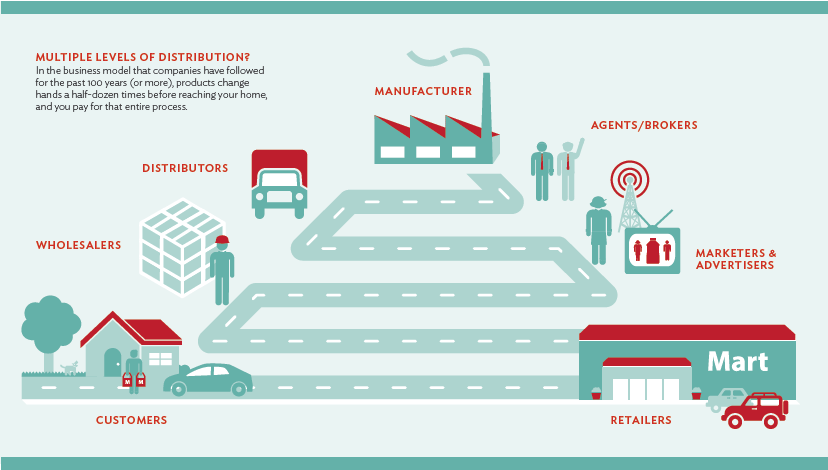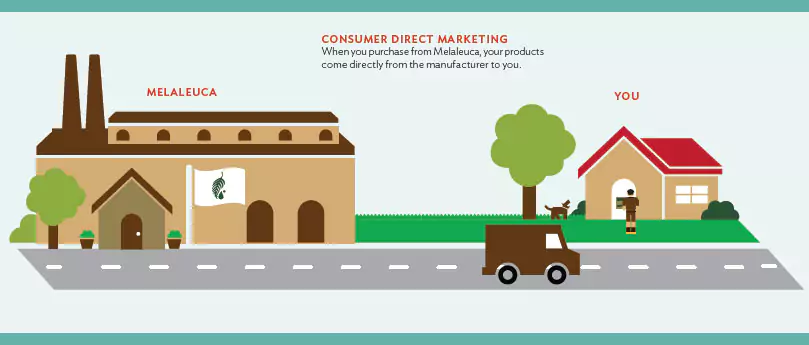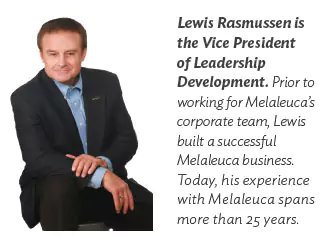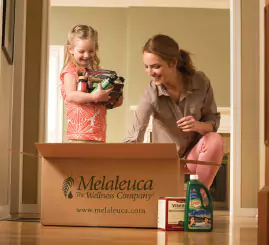The Melaleuca Revolution Continues
Melaleuca is 28 years old this month. For 25 and a half of those years, I have had the incredible opportunity of witnessing a marketing revolution—a revolution we call Consumer Direct Marketing. Melaleuca had nearly $12 million in sales the year I started. I have been delighted and amazed to watch it grow to $1.13 billion (in 2012)—that’s almost 10,000 percent what it was! And yet, as we look ahead, the best is still yet to come!
Our business model gives us a huge advantage over our competitors. And just who are our competitors? Sometimes people make the mistake of comparing Melaleuca with multilevel marketing (MLM) companies. We’ve discussed on these pages many times the differences between us and that type of company. Space won’t allow me to review much of that now, so we’ll start by discussing our real competitors and then mention one difference between us and MLMs.

Our real competitors
Our biggest competitors are large manufacturers whose products you find in the grocery stores. They are the big guys, and they do billions of dollars in sales each year. We have a long way to go to catch up to them. How are we doing? Let’s take a look.
In 1837, William Procter and James Gamble launched their little soap and candle company in Cincinnati. Even though they were competing with 14 other similar companies in their city, and it was a time of financial panic in the country, they still succeeded. However, it took 22 years before they had their first $1 million year. Now granted, if we adjust for inflation, that would equal several million of today’s dollars, but it’s still nowhere close to Melaleuca’s sales record. We also reached $1 billion many years ahead of their record. But let’s look at the bigger picture. A billion dollars is just the beginning. Today P&G has two-dozen brands that exceed $1 billion in annual sales individually. For most of those brands, we have a replacement
Our business model
I love our business model. Most manufacturers have to ship their products to retail stores where they have to compete for retail space. They want to take up as much shelf space as they can. That’s why these companies may produce several brands of shampoo, for instance, so they can occupy more shelf space and increase the chance of a customer buying one of their brands. When customers do purchase these products, think of how much they pay for everything that has nothing to do with what’s in the product. Do you think brand that is much more effective; is safer for your family, your home and the environment; and costs less per use. I can easily envision the day when many of our products will be $1 billion brands by themselves. most manufacturers ship directly to stores? Of course not. The graphic above illustrates all the “multilevel” middleman distribution that occurs in between.
Of course each of these middlemen get their cut when they handle the product. Then these companies spend billions of dollars on advertising. The customer pays for all of that, and it has nothing to do with what’s in the product. By the time these companies pay for all that, there just isn’t enough margin left for them to put the safest, most effective ingredients in their products. Their number one concern is to meet profit margins. On top of that, the biggest retailers in the world demand a lower price to beat out their competitors. Because it’s vital to have shelf space, manufacturers have to lower their prices further, so they cut back even more by using cheaper ingredients.
The Melaleuca difference
Most people join MLMs for one main reason: to make money. Since very few reach their income goals in these companies, they leave. Often they then go in search for the next deal that comes along. With Melaleuca, the majority of our customers are just that: customers. They are not here just to make money; they love the products—so much so that over 95 percent of them come back month after month to order those products. I love our customer-to-Marketing Executive ratio. Of course, everyone is a customer, but actually receiving a check each month is one of the requirements to be considered a Marketing Executive. When I started with Melaleuca over 25 years ago, the ratio of customers to Marketing Executives was about 50/50, meaning that half of all our customers were not getting a check; they were just shopping each month. Over the years, that ratio has been consistently changing. Today it’s close to 60/40 (63/37 to be exact). “Which direction?” you may ask. “Is it more customers or more Marketing Executives receiving monthly checks?” More customers! Now why would they stay and keep ordering products month after month when they are not making any money? Simple: They love the products. And if at any time they decide to start sharing this consumer direct concept with others and help them open their own shopping accounts, they can participate in a rewarding income-earning opportunity.

A superior business model
When an order is placed with Melaleuca, it is sent directly from our distribution center to the customer. We don’t fork out huge costs for multilevel distribution because we don’t have it. We don’t pay the networks, publications or high-powered celebrities for expensive advertising; those people probably aren’t even using the products they’re endorsing. This allows Melaleuca to put the finest, safest and most concentrated ingredients in our products.
We have real customers buying real products that they really want. They are sharing their experiences and referring others to our catalog shopping program. And we are more than delighted to share the profits of the sale of those products with Marketing Executives who refer those customers.
Of course that is all great news for anyone building a Melaleuca business. But it’s even better news when we consider that less than one half of one percent of the population of North America is using Melaleuca products at this point. Procter & Gamble products are in nearly every home. Even though tens of thousands of those homes are switching to Melaleuca products each month, we still have over 99.5 percent of them to get to—that’s only about 126,400,000 households left to share Melaleuca with. There are lives waiting to be enhanced. Let’s continue the revolution by getting out and enhancing them. As you do, you’ll agree:
The Best Is Yet To Come!




It’s easy to understate the impact that a simple product like Sol-u-Mel has on a person. My mother was a marketing executive growing up and to this day she asks me to get her Sol-u-Mel whenever she sees me. Even customers who no longer order products for whatever reason still retain a positive desire to have Melaleuca’s superior products in their home.
Yes! Just this week, I’ve met 3 people who are no longer customers but would still like more products. I’ve learned that unfortunately, many people who love the products cancel their account simply because they were misinformed by their enroller in some way. We must educate them the right way from the very beginning to ensure quality enrollments so they can enjoy the countless benefits of being a preferred customer for life!
I agree with Michelle,